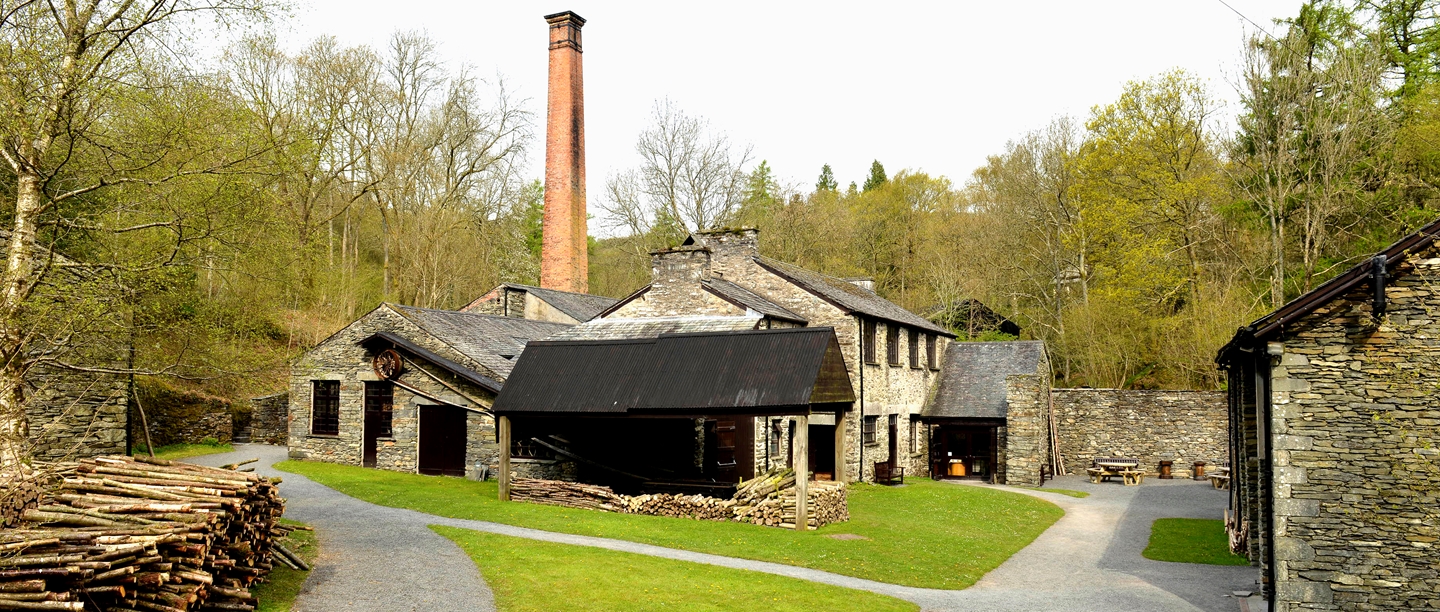Cutting machines
In the early 1800s, many factories were built in Lancashire to make cotton cloth. Millions of bobbins were needed to hold the cotton thread. These bobbins were placed on massive mechanical looms that wove the thread into cloth. In 1835, Stott Park Bobbin Mill was built to make wooden bobbins. A fast-flowing stream supplied power to turn the mill’s waterwheel and, as it turned, the waterwheel generated power. The wheel helped to turn lots of different shafts, wheels and leather belts, which then turned the cutting machines and lathes in different parts of the mill.
Local woodlands provided wood from ash, hazel, alder, birch, sycamore and rowan trees, grown as long straight poles suitable for bobbin-making. Poles were sawn to make small blocks. Mill workers used the lathes to cut and shape the blocks, transforming them into bobbins.
Dangerous work
Teenage apprentices carved out the rough shape of the bobbins from wooden blocks and bored holes in them. Skilled bobbin turners then finished them. Up to 25 men and boys were employed at a time. In the 1860s–80s, boys as young as 10 were brought from a local workhouse, working up to 13 hours a day.
Working at the mill was dangerous. The lathes did not have guards to protect the workers, and pieces of timber could be sent flying at high speed, causing head and hand injuries. The air was thick with sawdust, a cause of lung disease, and the piles of sawdust and shavings could catch fire.
Over time, the waterwheel was replaced by a steam engine, a water turbine and finally an electric motor. By 1900, there was less demand for cotton bobbins so the mill workers made other wooden products, such as tool handles, rungs for ladders and bobbins for coiling electrical wire.
Make a model of Stott Park Bobbin mill
Now you can make your very own model of Stott Park Bobbin Mill. Ask an adult to download the template and print it out for you, then you can follow the instructions below to build the mill.
Once you’ve completed it, put your model on display to impress your friends – and tell everyone about what it was like to work in a mill in the 19th century!
Download your templatesHow to build your own model of Stott Park Bobbin Mill
AS WELL AS THE TEMPLATES, YOU’LL NEED:
- Scissors
- Glue stick or double-sided sticky tape
-
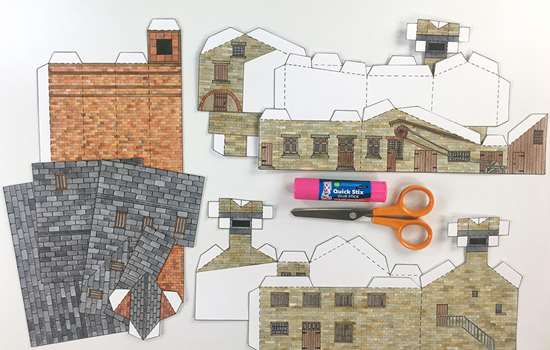
Step 1
Download your templates and print them out. Cut them out using a pair of scissors (or ask a grown-up to help). If you want to make the pieces stronger, print or stick them on to thin card.
-
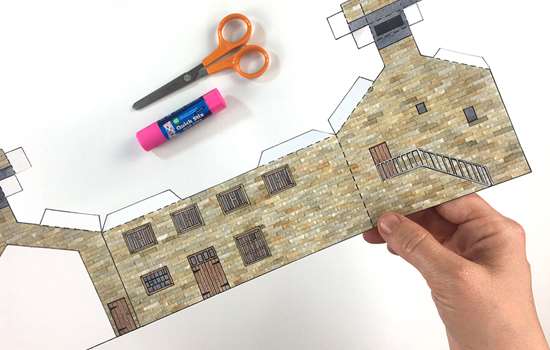
Step 2
We’ll start by making the old mill. Glue A1 and A2 together to create a long wall. Fold along the dotted lines and flatten the creases well.
-
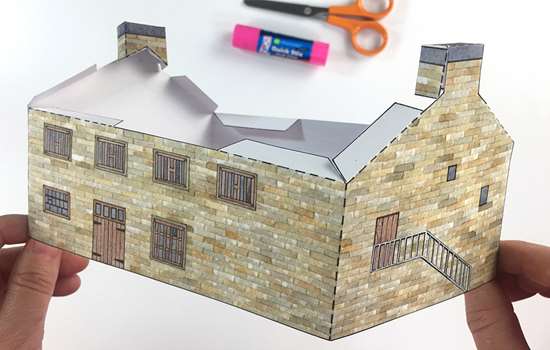
Step 3
Fold along the dotted lines on the two chimneys and put glue on the white tabs to secure. The two small triangle tabs fold back and help the chimney sit on the roof. Bring the two edges together and glue together to create the walls of the old mill.
-
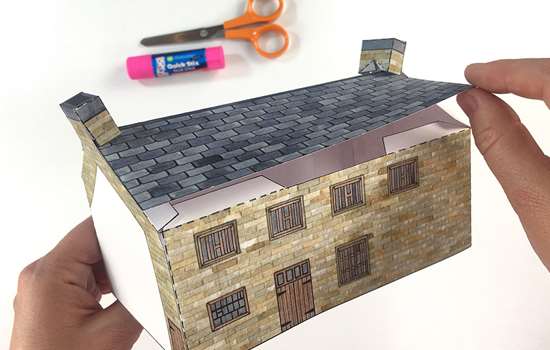
Step 4
Fold the roof of the old mill, A3, along the dotted line, and glue to the tabs at the top of the building to secure. Tuck it under the small triangle tabs at the bottom of the chimneys, putting a small blob of glue on these tabs if needed.
-
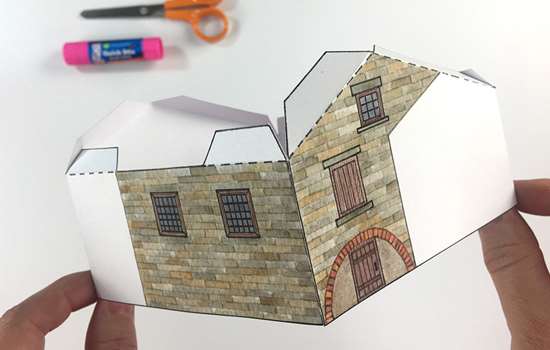
Step 5
Next, we’ll make the boiler house, which sits behind the old mill. Glue B1 and B2 together, fold along the dotted lines and bring the two edges together to create the boiler house walls.
-
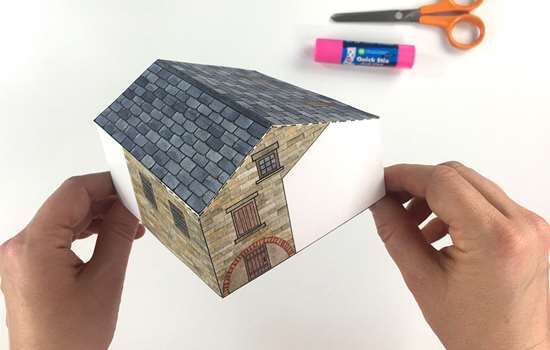
Step 6
Fold B3 in half and glue to the tabs at the top of the walls to complete the boiler house.
-
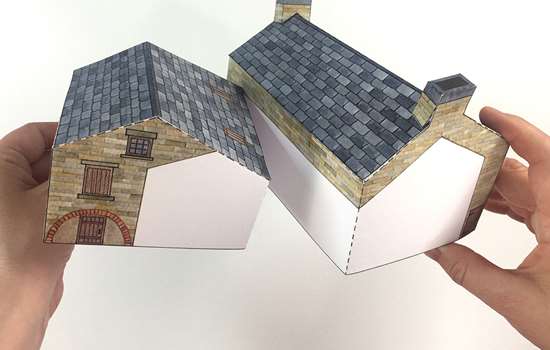
Step 7
Glue the boiler house to the back of the old mill.
-
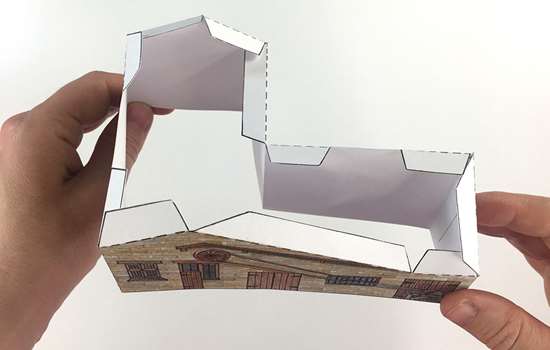
Step 8
Next, we’ll make the new lathe shop, an L-shaped building that attaches to the boiler house. Join C1 and C2 together, fold along the dotted lines and bring the edges together to create the building.
-
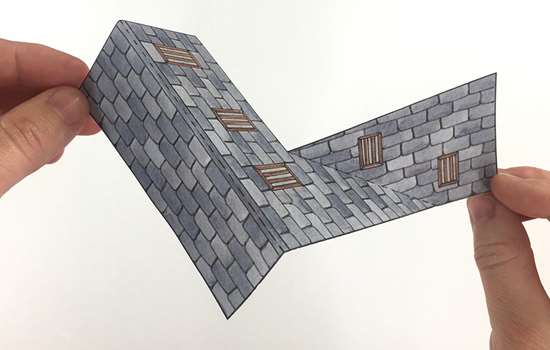
Step 9
Fold along the dotted lines of C3 to create the roof. Mountain fold the long dotted line to create a roof shape, and valley fold the diagonal dotted line to create a V shape, as shown in the photo.
-
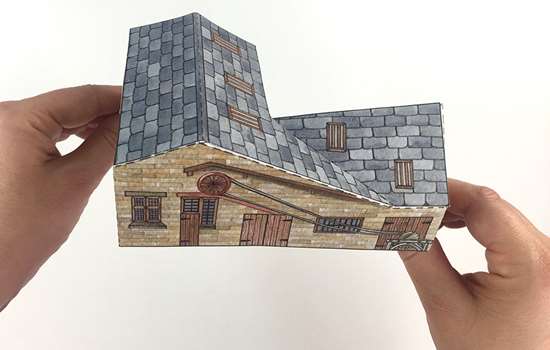
Step 10
Glue the roof on to the tabs at the top of the new lathe shop to complete this part of the bobbin mill. Put this to one side while you create the final building.
-
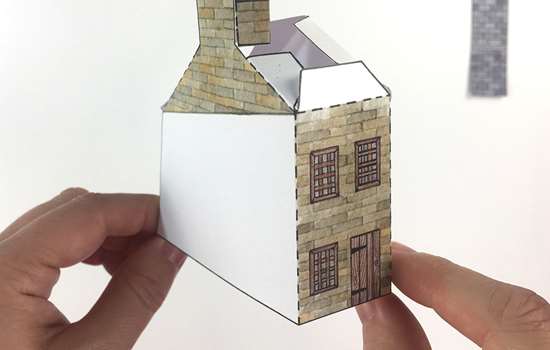
Step 11
Fold D1 together to create a small building. Fold along the dotted line on the roof, D2, and glue it to the tabs on the top of the walls.
-
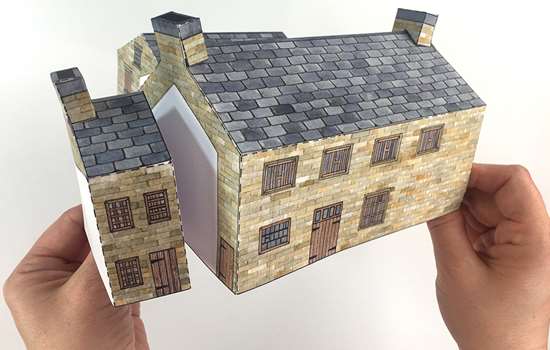
Step 12
Glue the small building on to the white area on the end of the old mill.
-
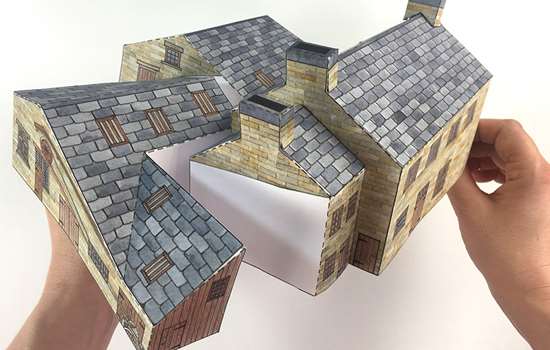
Step 13
Glue the L-shaped new lathe shop on to the back of the old mill, so that it wraps around the building and attaches to the small building you’ve just added.
-
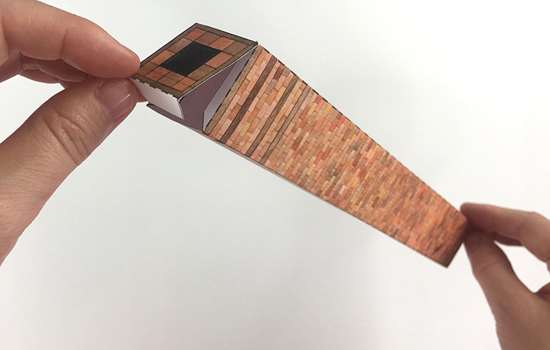
Step 14
Fold along the dotted lines on E, then fold together to create the big chimney. Glue the chimney to the back of the boiler house.
-
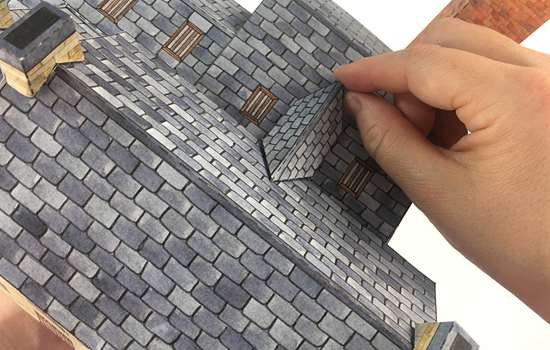
Step 15
Finally, fold along the dotted lines on F, and glue between the old mill and the boiler house to complete your model of Stott Park Bobbin Mill.
